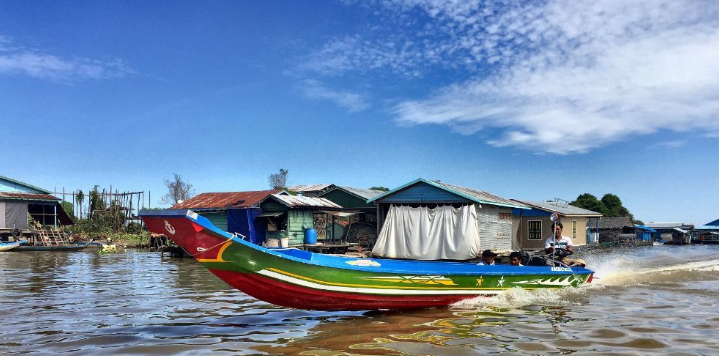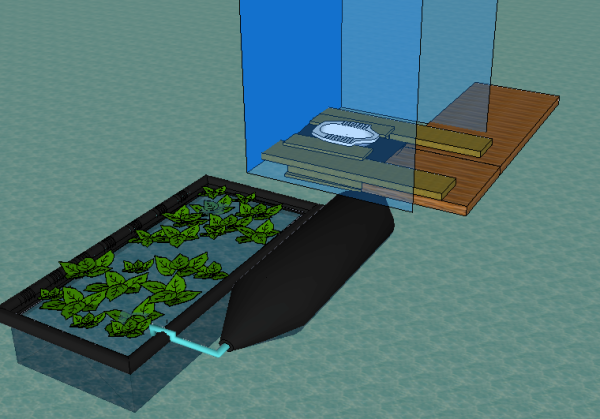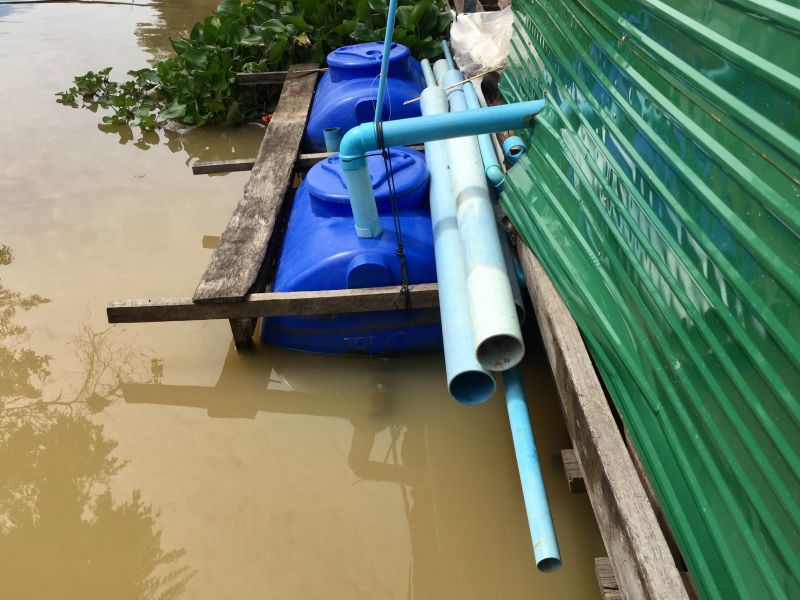Bacteria to Improve Sanitation on Southeast Asia's Largest Lake
Published on by Water Network Research, Official research team of The Water Network in Technology
HandyPod is a water treatment system that turns raw sewage into grey water of a high standard, by using bacteria.

Tonle Sap in Cambodia, the largest freshwater lake in Southeast Asia, is under threat of water pollution. (Photo: Pichayada Promchertchoo)
Piles of rotten garbage and a choking odour engulfed the bank of Tonle Sap near a small harbour in Chhnok Tru, Kampong Chhnang, Cambodia. Most of the rubbish, from plastic bags to human waste and animal carcasses, came from a fresh market a few steps away.
Tonle Sap, or the Great Lake, is becoming increasingly polluted. Chemicals from agriculture and various types of waste are being dumped into its water, which people use for drinking, cooking and washing.
“People defecate directly into the water,” said Hakley Ke from Wetlands Work, a Phnom Penh-based social enterprise. His organisation works to preserve the lake and improve the lives of about 100,000 residents in floating villages through innovative technologies.
A HandyPod is attached to a latrine and comprises two containers filled with microbes, including bacterial cells. When raw sewage flows into the drums, it triggers microbial activity, where a broad diversity of microbes that grow within the containers eat the pathogens and organics, purifying the wastewater.

By the time the water is released into the lake, bacteria such as E.coli – the cause of diarrheal illness – will mostly be destroyed.
“The end result is much less pathogen concentration entering into the ambient water,” Wetlands Work’s director and founder Taber Hand explained. “About 1 metre from the discharge point, the water may be considered recreationally safe.”
The HandyPod project has been tested with selected households in 10 villages on Tonle Sap and the results are positive. However, Hand said Wetlands Work is still preparing grants for a full scale-up around the lake and improvements in water quality will not be noticeable without large-scale adoption.

HandyPod is a water treatment system designed by Wetlands Work. (Photo: Pichayada Promchertchoo)
“We intend to apply the successful elements in a broader scale-up for all villages on the lake. Local savings and loan groups have welcomed the idea of marketing and installing HandyPods themselves as a revenue-generating business that benefits their floating community.”
HandyPod may be a potential solution to the polluted water of Tonle Sap but the cost of US$150 per unit means many families may not be able to afford it.
“Sustainable solutions to sanitation problems should be at low cost and with high practicalities,” said Socheath Sou, the country manager of Live & Learn Cambodia. His NGO is among the very few groups that have been promoting hygiene and sanitation on Tonle Sap. Together, they have tested a few toilet innovations but without much success.
Still, even as more HandyPods are produced and installed across the lake, the technology cannot be sustainable without the residents giving up old habits.
Read more on: Channel News Asia and Wetlands Work
Attached link
http://www.youtube.com/embed/3Dq6dCTxiwIMedia
Taxonomy
- Treatment
- Sewage Treatment
- Water Access
- Technology
- Sanitation
- River Studies
- Sewage
- Sanitation & Hygiene
- Water Supply
- Sanitation & Hygiene
- Waste Management
- Water Sanitation & Hygiene (WASH)
- Sanitation